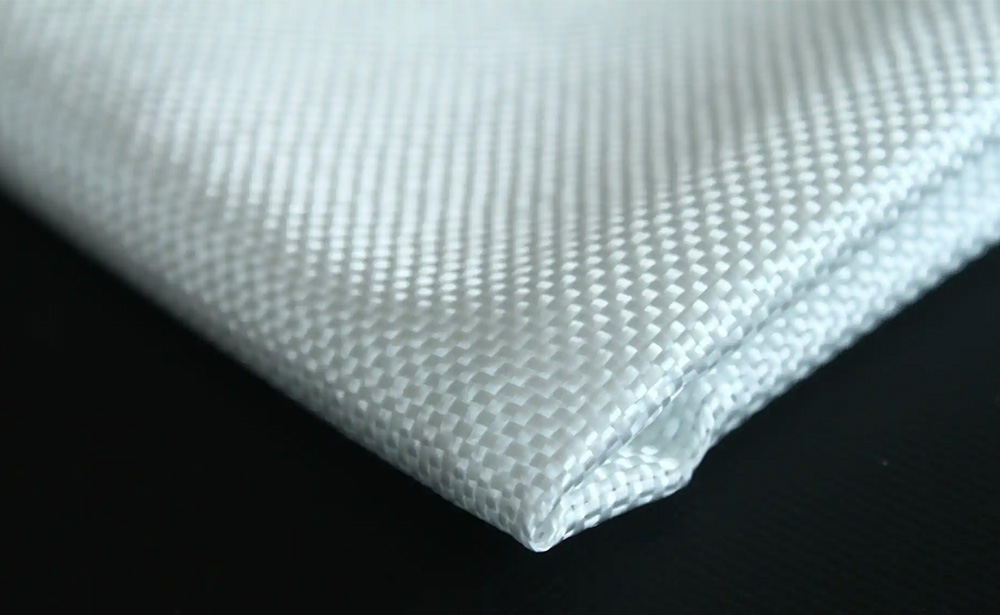As the core solution in the field of high temperature protection, fiberglass cloth and refractory fiber spraying technology are promoting the comprehensive improvement of industrial equipment safety and energy efficiency. This article will analyze the performance characteristics of these two technologies, application scenarios and synergistic innovation value, to provide technical reference for industry users.
Fiberglass cloth: the cornerstone material for high temperature protection
Fiberglass cloth based on inorganic non-metallic materials, through a special process to give its excellent performance, high temperature, corrosion and complex environments become the ideal protective material:
1. High Temperature Resistance
Conventional fiberglass cloth can withstand high temperatures above 500°C, and high silica products can withstand extreme environments above 1000°C. It is widely used in metallurgical furnace linings, spacecraft insulation and other scenarios.
2. Fireproof and Insulation Properties
Its flame retardancy can effectively isolate the spread of flames, and it also has high insulation resistance (10¹²-10¹⁵Ω-cm), which is suitable for the protection of electric equipment and the insulation of electronic components.
3. Corrosion resistance and light weight
Resistance to acid and alkali erosion makes it the first choice for chemical pipeline and tank protection; with a density of only 1/4 of steel, it contributes to lightweight design in the aerospace and automotive industries.
Typical applications:
- Industrial high-temperature equipment: furnace lining, high-temperature pipe insulation.
- New energy field: solar backplane support, wind power blade enhancement.
- Electronic technology: 5G base station wave-transparent parts, high-end motor insulation protection.
Refractory Fiber Spraying Technology: Revolutionary Upgrade of Industrial Furnace Lining
Refractory fiber spraying technology through the mechanization of construction, the fiber and binding agent mixed directly sprayed to the surface of the equipment, the formation of three-dimensional network structure, significantly improve the protective effectiveness:
1. Advantages
- Energy saving and consumption reduction: excellent sealing performance, reduce the heat loss of the furnace body by 30%-50%, extend the life of the furnace lining by more than 2 times.
- Flexible construction: adapting to complex curved surfaces and shaped structures, thickness can be precisely adjusted (10-200mm), solving the problem of fragile seams of traditional fiber products.
- Rapid repair: supports online repair of old equipment, reduces downtime and lowers maintenance costs.
2. Material innovation
Combining fiberglass substrate with tungsten carbide, alumina and other coating technologies, it can further improve wear resistance and high temperature resistance (withstand more than 1200°C) to meet the demanding needs of steel smelting, petrochemical reactors and so on.
Application Scenario:
- Industrial furnace lining: heat insulation and refractory protection for blast furnace and heat treatment furnace.
- Energy equipment: anti-thermal shock coating for gas turbine combustion chambers and boiler piping.
- Environmental protection engineering: corrosion-resistant coating for waste gas treatment equipment.
Synergistic application cases: technology integration to create new value
1. Composite Protection System
In petrochemical storage tanks, fiberglass cloth is laid as the basic heat insulation layer, and then refractory fibers are sprayed to enhance the sealing, and the comprehensive energy-saving efficiency is increased by 40%.
2. Aerospace Innovation
An aerospace enterprise adopts spraying technology for surface modification of fiberglass cloth base material, which increases the temperature limit of engine compartment heat insulation layer to 1300°C and reduces weight by 15%.
Industry dynamics and future trends
1. Capacity and Technology Upgrading
Sichuan Fiberglass Group and other enterprises to accelerate the expansion of production capacity, electronic fiberglass yarn capacity of 30,000 tons in 2025, and research and development of low dielectric, high temperature modification of the product, to adapt to the demand for spraying technology.
2. Green Manufacturing Trends
Refractory fiber spraying technology reduces material waste by 50% and carbon emissions by 20%, which is in line with the global carbon neutral target.
3. Intelligent Development
Combined with AI algorithms to optimize spraying parameters, it realizes intelligent control of coating uniformity and thickness, and promotes industrial protection towards precision.
Conclusion
The synergistic application of fiberglass cloth and refractory fiber spraying technology is reshaping the boundaries of industrial high-temperature protection. From traditional manufacturing to cutting-edge technology, the two provide efficient and sustainable solutions for energy, metallurgy, aerospace and other sectors through complementary performance and process innovation.
Post time: Mar-17-2025







